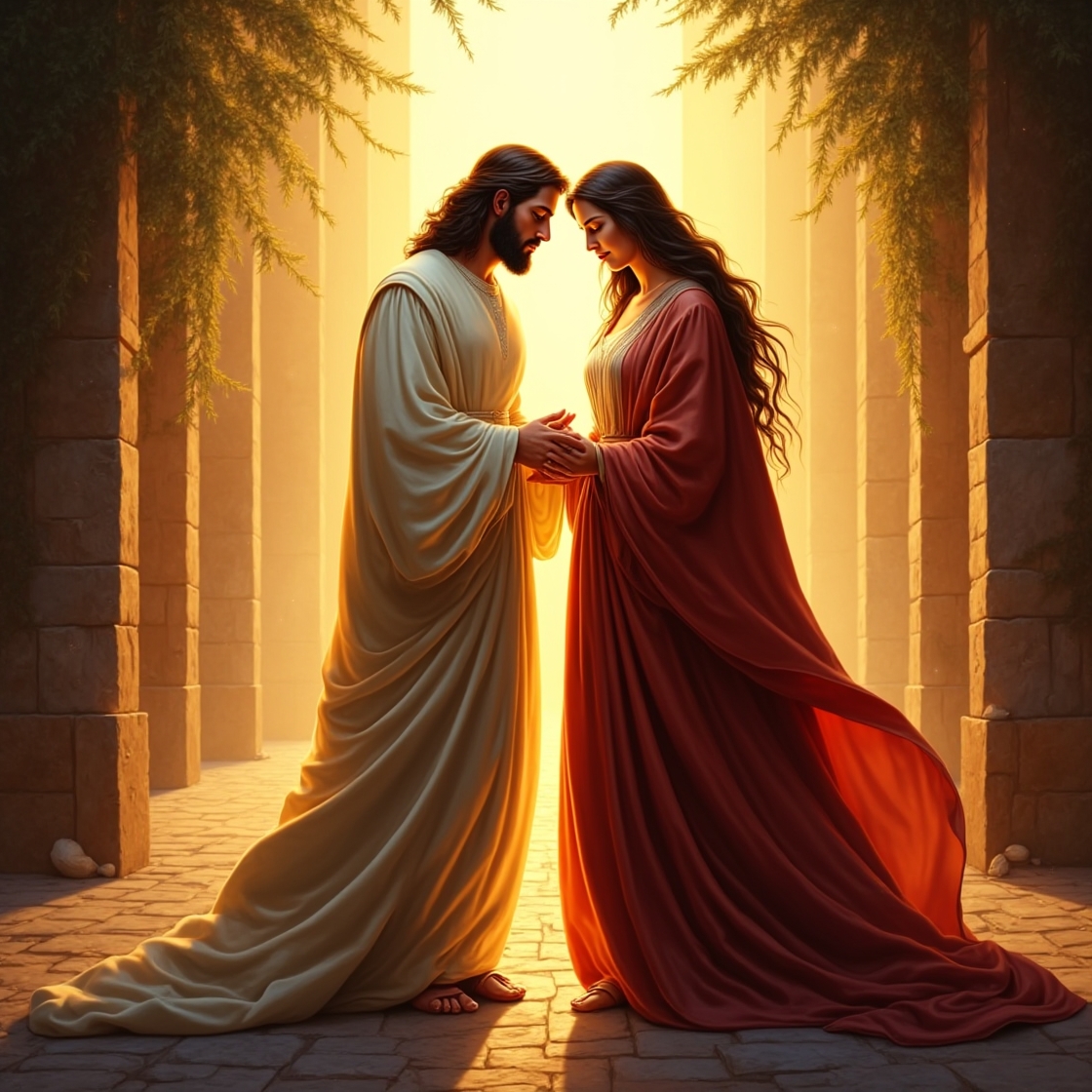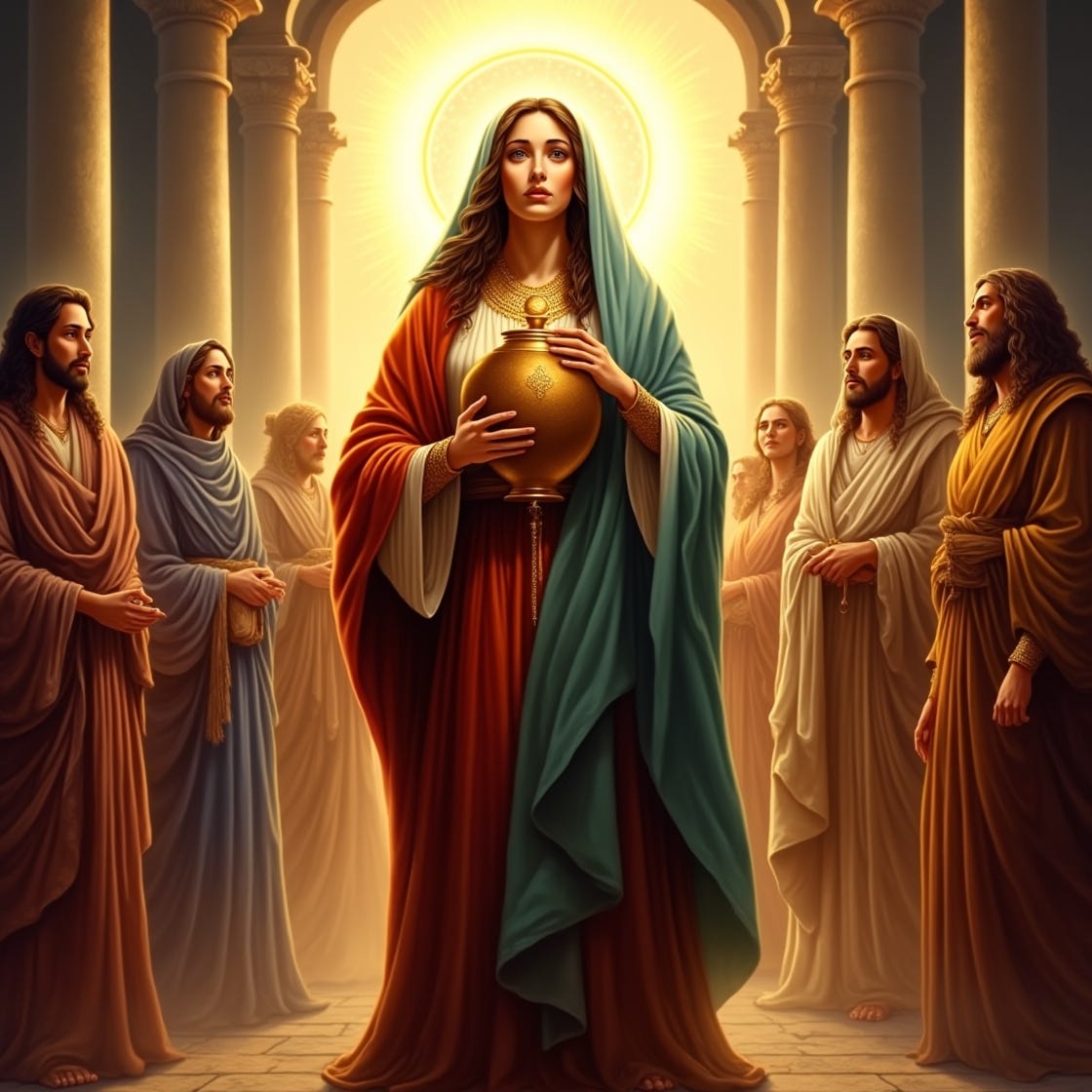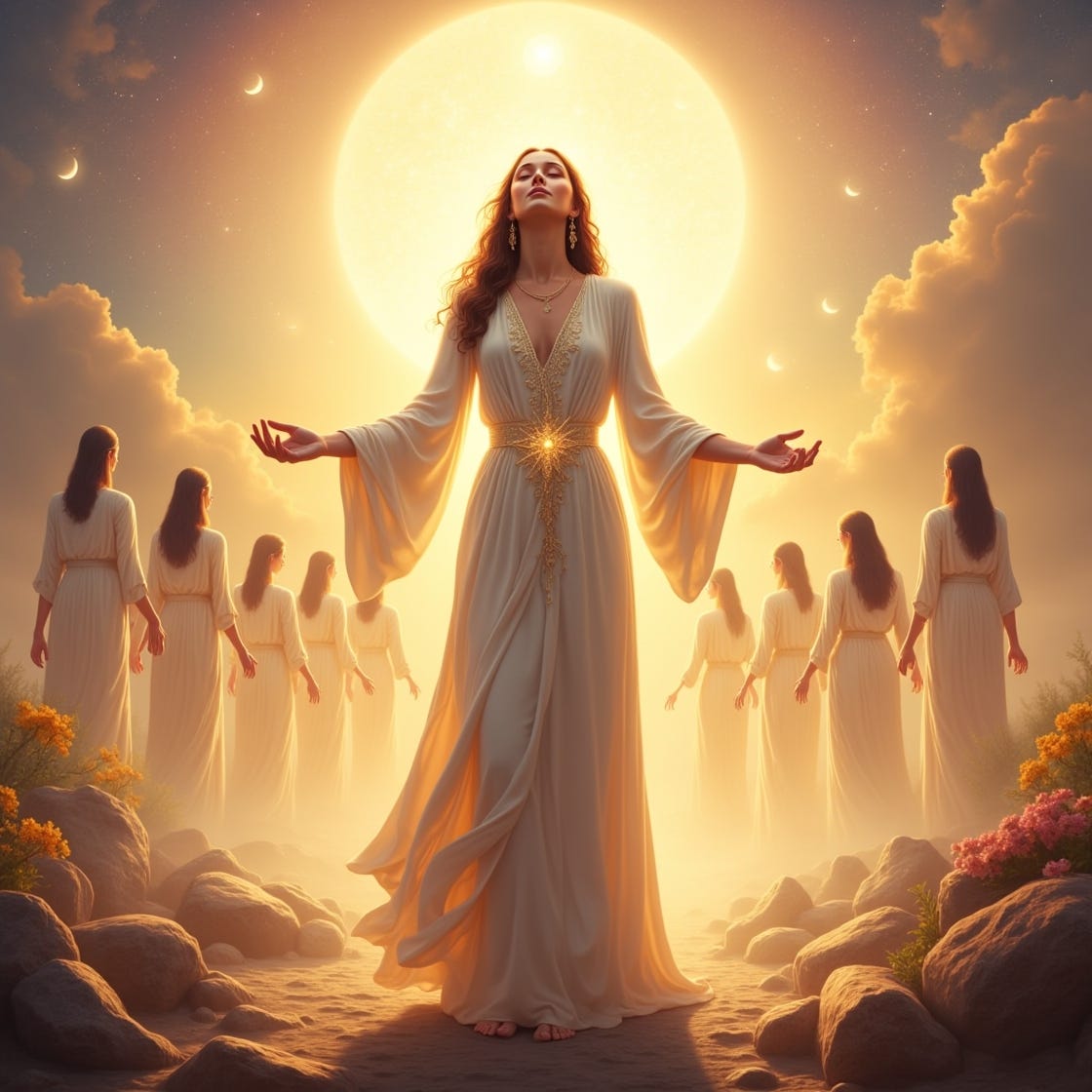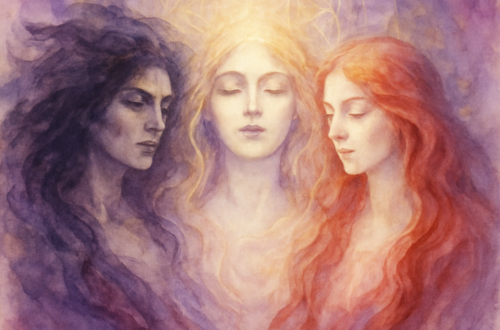
The Divine Union: Mary Magdalene as Yeshua’s Bride and Bearer of Sacred Wisdom
Within the sacred dance of divine masculine and feminine energies, Mary Magdalene emerges as a luminous figure whose story bridges ancient wisdom and modern revelation. As Yeshua’s spiritual partner, first witness to the Resurrection, and bearer of the living Christ consciousness, her legacy transcends patriarchal distortions to reveal a path of sacred union and spiritual wholeness. This article weaves historical scholarship, Gnostic insights, and contemporary portrayals-including her pivotal role in The Chosen-to illuminate Mary’s purpose as the Bride of Christ and her enduring influence on the early Church and beyond.
Reclaiming Mary Magdalene: From Distortion to Divine Partner
Historical Misrepresentation and Rediscovery
For centuries, Mary Magdalene’s identity was obscured by deliberate misreadings of scripture. The conflation of her story with other Marys and unnamed “sinful women” in the Gospels-particularly Pope Gregory I’s 6th-century sermon labeling her a repentant prostitute-erased her true role as Yeshua’s closest disciple[1][2]. Modern scholarship, however, reveals her as a woman of means who funded Yeshua’s ministry (Luke 8:1–3)[3][4] and witnessed every critical moment of his life: the crucifixion, burial, and resurrection[5][6].
The title Magdalene (ἡ Μαγδαληνή) likely derives from Magdala, a fishing town on the Sea of Galilee, but Margaret Starbird argues it carries deeper symbolic meaning. The Greek gematria of h Magdalhnh sums to 153-the number of fish in John 21:11, representing the “Church of the Fishes” and the vesica piscis, a sacred geometric symbol of divine union[7][8]. This numerology positions Mary as the archetypal Bride, the feminine counterpart to Christ’s masculine divinity[9][10].
The Sacred Partnership: Yeshua and the Magdalene
Gnostic Revelations of Spiritual Intimacy
Gnostic texts, suppressed by early Church authorities, depict Mary as Yeshua’s most beloved disciple. The Gospel of Philip states, “Christ loved her more than all the disciples and used to kiss her often on the mouth”[11][12]. This “kiss” symbolizes the transmission of gnosis (divine knowledge), affirming her role as the primary recipient of his esoteric teachings. When Peter challenges her authority in the Gospel of Mary, Levi defends her: “The Savior loved her above all others”[13][14].
The anointing at Bethany-recorded in all four Gospels-holds particular significance. Mary’s act of anointing Yeshua’s feet (John 12:3) or head (Mark 14:3) mirrors the hieros gamos, an ancient ritual where a priestess anointed a king to legitimize his rule and renew the land’s fertility[15](https://northernway.org/twm/mary/magdalene.html)[16]. Yeshua’s response, “She has anointed my body beforehand for burial” (Mark 14:8), ties this act to his sacrificial mission, with Mary serving as both priestess and partner in his redemptive work[17][18].
Apostle to the Apostles: Resurrection and Leadership
First Witness and Evangelist
All four Gospels name Mary Magdalene as the first to encounter the risen Christ[19][20][21]. In John’s account, Yeshua calls her by name-Rabboni-transforming her grief into apostolic(John 20:16)[22][23]. Early traditions, such as the Golden Legend, claim she later confronted Emperor Tiberius, holding a red egg as a symbol of resurrection and catalyzing Pilate’s downfall[24][25].
Eastern Orthodox tradition honors her as “Equal-to-the-Apostles,” while the Catholic Church elevated her feast day to a liturgical celebration in 2016, acknowledging her as “Apostle to the Apostles”[26][27]. Yet Margaret Starbird argues this falls short: Mary’s true legacy lies not in institutional recognition but as the embodiment of the Bride, the feminine principle essential to cosmic balance[28][29].
The Chosen: A Modern Reclamation of Mary’s Legacy
Portrayal as the Redeemed Disciple
The television series The Chosen (2017–present) reimagines Mary’s journey with striking theological depth. In Season 1, Episode 1, she is introduced as a tormented soul haunted by seven demons (Luke 8:2), self-medicating with alcohol until Yeshua heals her by reciting a childhood prayer-a creative interpretation of her exorcism13[30][31]. Actress Elizabeth Tabish portrays Mary’s transformation from brokenness to discipleship, emphasizing her humanity: “She struggles, falters, and is restored… a realistic depiction of growth”[32][33].
The series underscores her centrality to Yeshua’s mission. She is the first to recognize him post-resurrection, mirroring the Gospels’ accounts[34]. Showrunner Dallas Jenkins uses this narrative choice to highlight her spiritual intimacy with Christ, contrasting her intuitive understanding against Peter’s institutional rigidity[35][36].
The Magdalene Legacy: Bride, Mother, and Mystic
Guardian of the Sacred Lineage
Southern French legends claim Mary fled to Provence with Lazarus and Martha, carrying the “blood of Christ”-interpreted by some as a physical child (Sarah) and by others as the living wisdom of the Resurrection[37][38]. The Cathars revered her as the guardian of the San Greal (Holy Grail), symbolizing the sacred feminine’s role in preserving Christ’s teachings[39][40].
In the caves of Sainte-Baume, Mary’s 30-year asceticism represents the integration of active ministry and contemplative mysticism. Medieval art depicts her receiving communion from angels, a motif echoing the Gnostic view of her as the Woman Who Knows All[41][42].
The Divine Feminine Awakened: Mary’s Legacy for Our Time
In Mary Magdalene, we recognize the awakening of the divine feminine that balances and completes the divine masculine embodied in Yeshua. Their relationship models the sacred union that heals separation and brings wholeness. Just as Sophia (Divine Wisdom) was understood as the feminine aspect of God made flesh through Mary5, Magdalene represents the feminine aspect of spirituality that completes the Christ revelation.
The suppression of Mary Magdalene’s true role parallels the suppression of the divine feminine in Western spirituality. Her emergence now in our collective consciousness is not accidental but synchronous with the reawakening of feminine spiritual energy needed for our planetary healing.
As Margaret Starbird notes, the number 153 associated with Mary Magdalene in esoteric tradition symbolizes “the Church of the Fishes”-the community of those who follow the mystical rather than merely institutional understanding of Christ’s teaching[43](https://northernway.org/school/starbird.html). This community transcends denominational boundaries and recognizes the essential role of the divine feminine in spiritual awakening.
Embracing the Wholeness: Integrating Mary’s Wisdom Today
The rediscovery of Mary Magdalene’s true identity and role invites us to embrace a more balanced spirituality. When we honor her as Bride of Christ-the feminine principle in sacred union with the divine masculine-we open ourselves to wholeness. Her journey from healing to discipleship to mystical union maps our own spiritual evolution.
Mary reminds us that the most profound spiritual understanding comes not through institutional authority but through direct communion with the divine. Her example challenges us to honor the wisdom that comes through intuition, embodied knowing, and sacred relationship.
In recognizing Mary Magdalene as the true Bride of Christ who carried forward his deepest teachings, we reclaim a spirituality that honors both masculine and feminine, both structure and flow, both transcendence and immanence. We remember that the church in its truest sense is not an institution but a community of awakened souls joined in sacred union with the divine.
The divine feminine awakens in our recognition of Mary Magdalene’s essential role, and through her, we find our way back to the balanced understanding of spirituality that Yeshua himself embodied and taught. In this sacred union, we discover not just historical truth but living wisdom for our spiritual journey today.
Conclusion: Restoring the Divine Feminine
Mary Magdalene’s story is a call to reclaim the divine feminine in spiritual practice. Her partnership with Yeshua models the sacred union of masculine and feminine energies-a balance suppressed by institutional Christianity but resurging in modern movements. The Chosen’s portrayal, alongside scholarly rediscovery of Gnostic texts, invites a paradigm shift: from a patriarchal “Church as Bride” to a living communion of souls embodying Christ consciousness.
As Margaret Starbird asserts, “The Book of Revelation ends with the Nuptials of the Lamb and his Bride-a union that heals the nations”[44]. In Mary Magdalene, we find not merely a historical figure but an eternal archetype-a guide for those seeking wholeness in the dance of sacred partnership.
Citations:
[1] https://northernway.org/membersworks8.html
[2] https://www.catholic.com/magazine/online-edition/who-is-mary-magdalene
[3] https://undeceptions.com/history/5-minute-jesus-the-women-who-bankrolled-jesus-mission/
[4] https://churchlifejournal.nd.edu/articles/a-retrieval-of-the-traditional-view-of-mary-magdalene/
[5] https://en.wikipedia.org/wiki/Mary_Magdalene
[6] https://heraldsofrevival.org/2022/04/18/the-first-witness-of-christs-resurrection%EF%BF%BC/
[7] https://northernway.org/school/starbird.html
[8] https://www.northernway.org/weblog/?p=1213
[9] https://www.northernway.org/weblog/?p=1213
[10] https://northernway.org/goddess.html
[11] https://northernway.org/twm/mary/magdalene.html
[12] https://www.bartehrman.com/gospel-of-mary-magdalene/
[13] https://www.gnosticmuse.com/mary-magdalene/
[14] https://www.bartehrman.com/gospel-of-mary-magdalene/
[15] https://northernway.org/twm/mary/magdalene.html
[16] https://northernway.org/twm/mary/bride.html
[17] https://northernway.org/twm/mary/magdalene.html
[18] https://northernway.org/twm/mary/bride.html
[19] https://en.wikipedia.org/wiki/Mary_Magdalene
[20] https://heraldsofrevival.org/2022/04/18/the-first-witness-of-christs-resurrection%EF%BF%BC/
[21] https://churchlifejournal.nd.edu/articles/a-retrieval-of-the-traditional-view-of-mary-magdalene/
[22] https://heraldsofrevival.org/2022/04/18/the-first-witness-of-christs-resurrection%EF%BF%BC/
[23] https://butterflyliving.org/the-story-of-mary-magdalene/
[24] https://northernway.org/membersworks8.html
[25] https://en.wikipedia.org/wiki/Mary_Magdalene
[26] https://www.northernway.org/weblog/?p=1213
[27] https://en.wikipedia.org/wiki/Mary_Magdalene
[28] https://www.northernway.org/weblog/?p=1213
[29] https://northernway.org/goddess.html
[30] https://butterflyliving.org/the-story-of-mary-magdalene/
[31] https://the-chosen.fandom.com/wiki/Mary_Magdalene
[33] https://parade.com/entertainment/the-chosen-elizabeth-tabish-religion-mary-magdalene-exclusive
[34] https://the-chosen.fandom.com/wiki/Mary_Magdalene
[35] https://the-chosen.fandom.com/wiki/Mary_Magdalene
[36] https://www.bartehrman.com/gospel-of-mary-magdalene/
[37] https://northernway.org/twm/mary/magdalene.html
[38] https://northernway.org/membersworks8.html
[39] https://northernway.org/twm/mary/magdalene.html
[40] https://northernway.org/twm/mary/bride.html
[41] https://northernway.org/membersworks8.html
[42] https://www.gnosticmuse.com/mary-magdalene/








One Comment
Pingback: